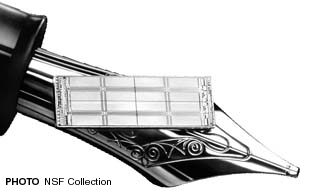
THE 1990'S
GAINING STRENGTH, SPEAKING OUT
 With the collapse of the Soviet Union, the United States suddenly found itself the world's sole
superpower. Yet the Nation's economy remained riddled with problems, including a huge federal deficit,
an underskilled workforce, and poor K-12 education. William J. Clinton won election as President in 1992
in part because he called for government to address these issues more actively. Support for research at U.S.
universities grew with the decade. Americans saw a dramatic payoff from university research after NSF
opened the Internet to public and commercial use in 1991. More than in the 1980s, states helped their local
institutions to compete for NSF awards. By FY2000 the Foundation's budget had topped $4 billion.
With the collapse of the Soviet Union, the United States suddenly found itself the world's sole
superpower. Yet the Nation's economy remained riddled with problems, including a huge federal deficit,
an underskilled workforce, and poor K-12 education. William J. Clinton won election as President in 1992
in part because he called for government to address these issues more actively. Support for research at U.S.
universities grew with the decade. Americans saw a dramatic payoff from university research after NSF
opened the Internet to public and commercial use in 1991. More than in the 1980s, states helped their local
institutions to compete for NSF awards. By FY2000 the Foundation's budget had topped $4 billion.
The Board offered advice within a context that was increasingly global in scope. Issues such as species loss, global climate change, and the Internet's power to distribute information highlighted the international nature of science. The Board tackled national policy issues, such as research priority-setting, now that decisions were no longer to be made under the exigencies of the Cold War. With a report that made the case for environmental research and education as a national and NSF priority, and in other statements on national policy, the Board began finally to fulfill the vision that Vannevar Bush had originally spelled out in Science-The Endless Frontier.
- Systemic Change
- Beleaguered Industry
- How to Measure Performance
- The Frontier of Information Technology
- A Vision for a National Role
- Strategic Directions for Education, Scientific Freedom, and the Environment
- 2000 and Beyond
